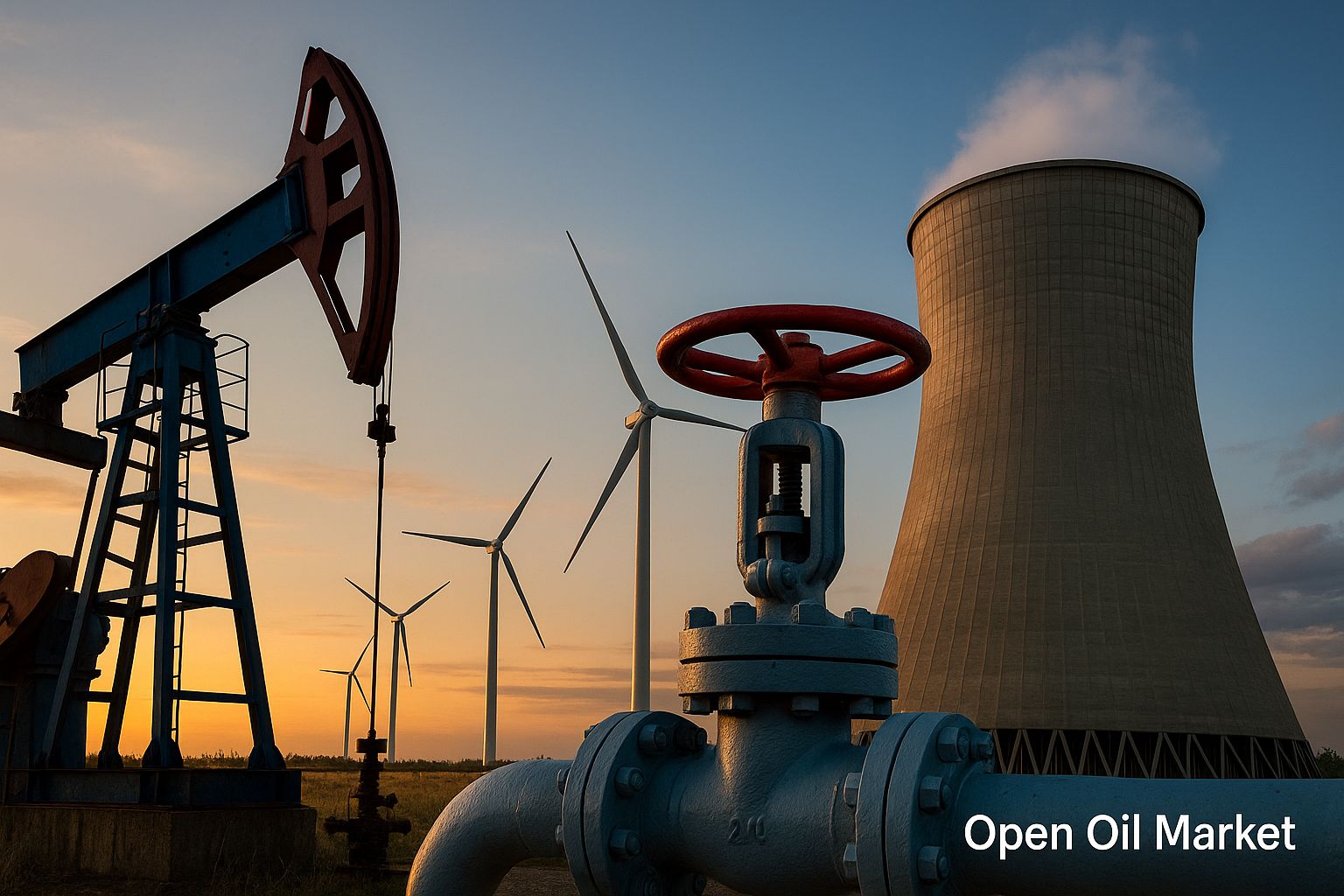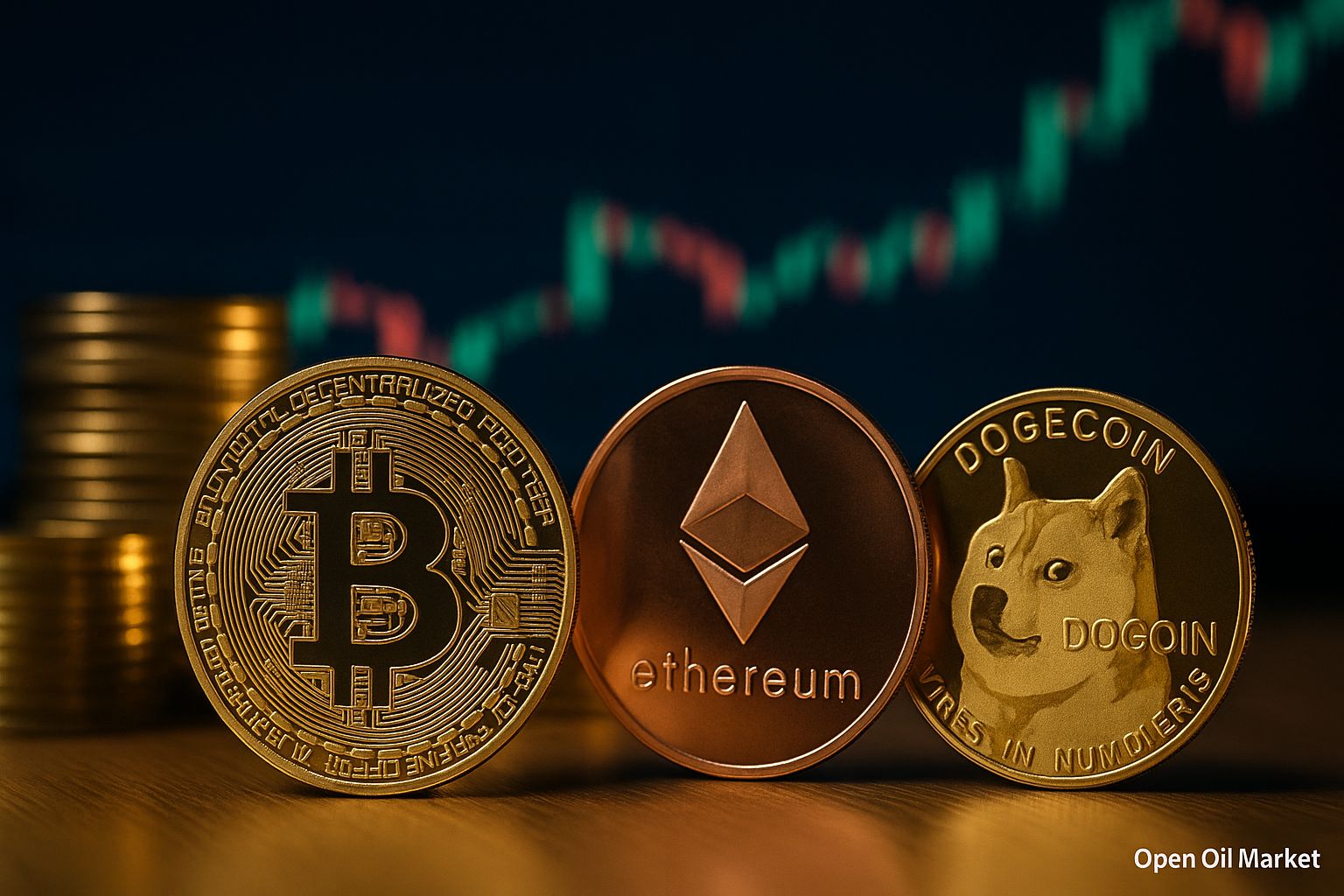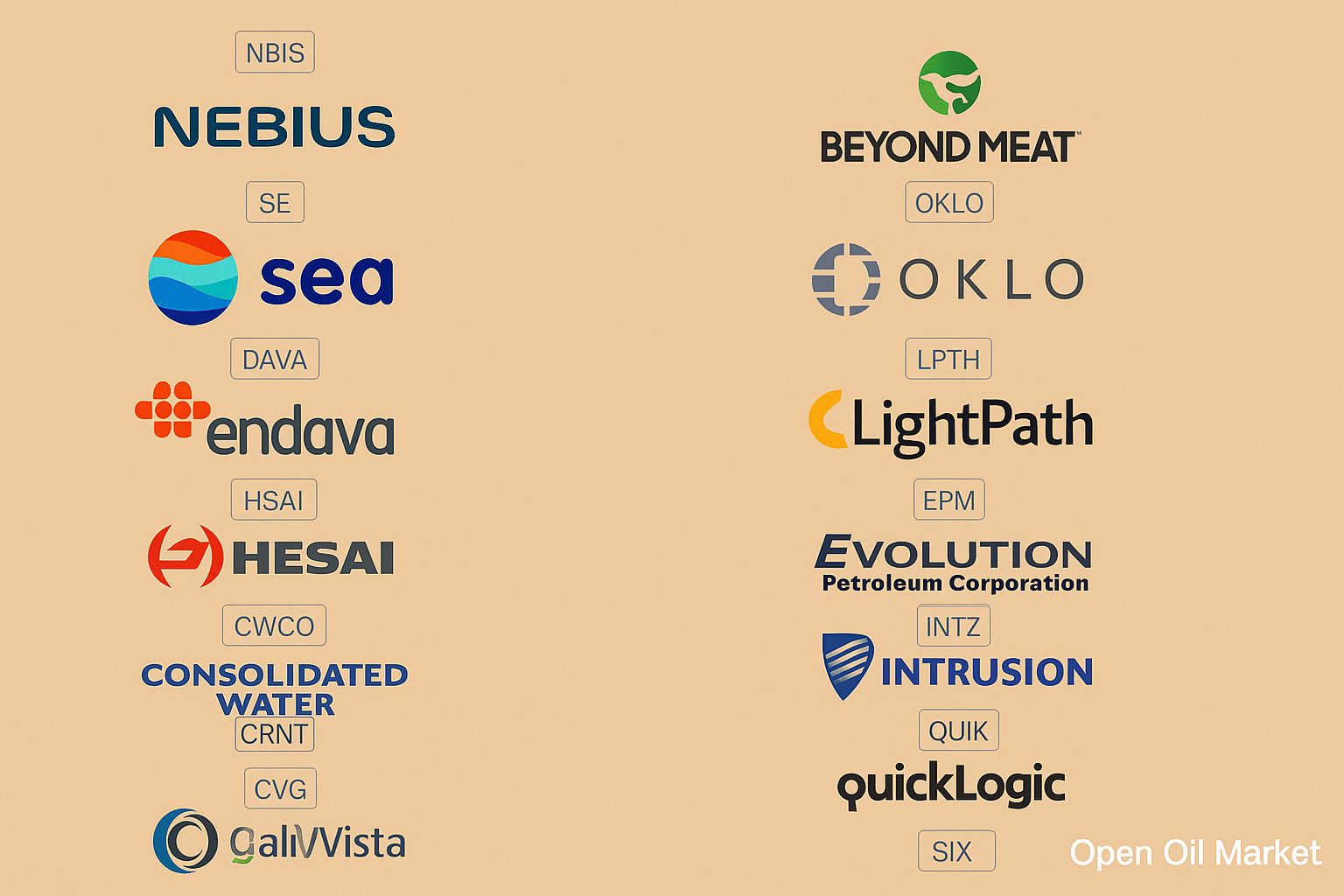
Current News in the Fuel and Energy Sector as of 3 November 2025: Oil Production Growth, Record Gas Reserves in Europe, Renewable Energy Development and Stabilisation of the Oil Products Market. Analysis of Global Energy Trends, Investments and Geopolitical Factors.
The start of the working week in the global fuel and energy sector is marked by a combination of conflicting trends. On the one hand, OPEC+ countries and other major producers continue to gradually increase crude oil production, while oil prices remain in a moderate range (Brent at approximately $60–65 per barrel). On the other hand, record fuel reserves have engulfed Europe and Asia: underground gas storage is over 95% full, and functioning renewable energy capacity is hitting historical records. A strategic truce in trade between the USA and China has improved demand forecasts for energy resources, but ongoing geopolitical tensions and Western sanctions create risks for supply. In Russia, the domestic fuel market is stabilising after the autumn shock: gasoline and diesel production has been restored, and wholesale prices are declining due to government measures (temporary export bans on fuel).
- In November, OPEC+ officially increased production quotas by approximately 137,000 barrels per day, with alliance participants preparing for a similar move in December.
- Global oil prices remain in the middle of the end of 2025: Brent has stabilised around $60–65 per barrel, with volatility persisting amid trading news and sanctions.
- The gas sector is entering winter with unprecedented high reserves: EU gas storage facilities are over 95% full, keeping spot gas prices at around €30/MWh (less than half of the peak in 2022).
- The global energy transition is gaining momentum: investments in renewable energy have set new records, with the share of wind and solar power in electricity generation continuing to grow.
- In the Russian oil products market, emergency measures are alleviating the crisis: wholesale prices for gasoline and diesel are declining, and there is no fuel shortage.
Oil Market: Oversupply and Moderate Price Growth
The global oil market remains in a state of mild oversupply. OPEC+ countries are gradually expanding production: alliance members officially raised quotas by +137,000 barrels per day in November and are preparing for a similar increase in December. The USA, Brazil, and other independent producers continue to ramp up production to record levels. Against this backdrop, global demand growth is slowing — the International Energy Agency (IEA) forecasts an increase of less than +0.7 million barrels per day in 2025, significantly lower than last year’s pace.
- OPEC+ and Global Supply. The OPEC+ alliance gently eased voluntary restrictions by 2.2 million barrels per day in October-November, restoring approximately 137,000 barrels per day. A similar increase in quotas is expected in December. This boosts inventory accumulation and limits the potential for rapid price increases.
- Demand and Economy. Despite concerns about oversupply, the USA-China trade truce creates new hopes for increased consumption of energy resources. However, global demand is still growing sluggishly — financial markets are oriented towards moderate economic growth. Increased energy efficiency and the proliferation of electric vehicles are also dampening oil consumption growth.
- Pricing. After a plunge to lows last week (Brent fell to around $60), oil prices have rebounded to approximately $65 per barrel due to optimism regarding demand and new sanctions against Russian exporters. Overall, average oil prices remain below levels seen at the beginning of the year ($60–65/barrel), with periodic spikes arising from geopolitical events and inventory news.
Gas Market: Record Reserves and Low Prices
The gas sector is demonstrating relative stability as of the end of October. Most European energy companies concluded the summer season with record fuel reserves in UGS (over 95%), which mitigates the demand for additional shipments and keeps spot gas prices at low levels (around €30–35/MWh). The winter period has begun with warm weather, leading to lower gas consumption than usual, while additional LNG supplies and secondary shipments from the USA and Qatar have ensured a reliable resource buffer.
- Record European Reserves. The EU enters the heating season with nearly full gas storage — about 95–97%. This minimises the risk of energy shortages and limits price volatility for “blue fuel.”
- Shifts in Gas Flows. A notable event in the past week was Italian Eni's refusal to supply through the "Blue Stream" pipeline (to Turkey) as part of a contract with Botas. Simultaneously, Russian pipeline gas exports to Turkey surged by 26% in January-July 2025. These changes indicate a reorientation of flows: part of the fuel is moving eastwards and to Turkey, while reduced sales in Europe are being offset through other channels.
- LNG Development. The global LNG market remains oversupplied: large volumes of liquefied gas from the USA, Qatar, and Australia experience no shortage of buyers, continuing to exert downward pressure on gas prices in Asia and Europe. Notably, Asian demand has been relatively weak this autumn after a cold summer, so LNG prices also remain moderate.
Electric Power and Renewable Energy: Record Investments and Capacity Expansion
The energy transition is reaching new frontiers: investment in renewable energy globally has set records. According to industry analysts, global investments in "clean" energy grew by approximately 10% in the first half of 2025 compared to the previous year, exceeding $380 billion. Investments in small solar installations and other distributed renewable energy sources show particularly high growth, despite decreased funding for large infrastructure projects in the USA.
- Growth of "Green" Capacity. In 2025, record capacities of wind and solar power plants will be introduced: China plans over 300 GW of new solar capacity (more than double last year) and over 140 GW of wind energy. Europe, the USA, India, and other markets are also ramping up renewable energy volumes, increasing the share of wind and solar in their energy systems.
- Investment Transition. Investor capital is gradually shifting towards renewable energy: in the USA, investments in "clean" energy have declined due to regulatory policies, while in the EU and Asia-Pacific region, they have significantly increased. This reflects a growing investor demand for low-carbon projects with stable returns.
- Innovations and Infrastructure. Concurrently, developments in energy storage, “green” hydrogen, and efficient grid equipment are progressing. In several countries, transition incentive programmes are being introduced: for example, the European Union is discussing new mechanisms for carbon price control (a potential cap at €45/t CO₂), while in Asia, governments are actively subsidising renewable energy projects.
Coal Sector: Seasonal Demand Spike and Transition Trends
The coal market is exhibiting mixed dynamics: following summer peaks in demand for electricity, the growth in its consumption has somewhat cooled. In August-September, spurred by abnormal heat in China and India, coal generation temporarily increased, supporting prices: imports to China and India reached multi-month highs, and prices for popular grades of thermal coal hit local peaks. However, this seasonal revival is likely to be temporary.
- Increased Demand in Asia. In China, the surge in summer electricity demand and reduced hydro production stimulated increased coal imports. Weak growth in domestic production (safety restrictions in mines) also supported purchases. A similar trend is observed in India, where foreign coal purchases noticeably rose during the summer period.
- Declining Long-term Demand. Despite short-term price recovery (up to $40–70 per tonne for popular grades), medium-term trends remain bearish: the energy transition and the large-scale integration of wind/solar in China, Europe, and the USA systematically reduce the share of coal in generation. For example, in the first half of 2025, over 300 GW of new renewable energy was introduced in China, fundamentally altering the demand structure for fossil fuels.
- European Outlook. In the EU, coal is gradually being phased out in line with climate goals, although there remains a reserve for peak loads in some regions (Eastern Europe, the Balkans). Overall, coal markets remain relatively balanced, and prices are stable amid moderate global demand.
Fuel Market and Refineries: Slowdown in Price Growth and Stabilisation
The Russian oil products market is adapting to new conditions following the autumn price “jump.” By the end of October, gasoline and diesel production has been restored to pre-crisis levels, and temporary export restrictions (banning gasoline exports) have helped increase domestic reserves. Thanks to these measures, wholesale prices for AI-92 and diesel are falling from their peaks, and fuel availability at filling stations exceeds previous months of tension.
- Global and Internal Factors. The situation is influenced by a combination of internal and external factors: on the one hand, global oil product prices have declined from summer highs, and on the other hand, the collapse of prices on the domestic exchange continues under the influence of rising excise duties and inflation. Experts predict that in November, retail price growth for gasoline in Russia will slow down (for instance, AI-92 will trade at around 61–63 ₽/l), but will not turn negative due to the aforementioned fundamental reasons.
- Refineries and Logistics. Refineries have restored output, but some capacities were halted for repairs in September, previously exacerbating shortages. Now, extensive repairs have been completed, and logistical chains are normalising, further alleviating price pressure. There is a noted easing of speculative demand and a reduction in shortage expectations.
- Regional Dynamics. In remote regions of the Russian Federation, prices traditionally remain above the national average due to high logistics costs. However, the overall trend is a gradual decline in the rate of increase for gasoline and diesel prices, which is already evident across the board. Government measures (tax incentives, price monitoring) help keep the situation under control.
Geopolitics and Sanctions: Trade Truces and Energy Security
Energy markets remain sensitive to political factors and the sanctions environment. The interaction of major powers continues to exert a key influence: the trade agreement signed on 30 October between the USA and China has reduced tension in the global economy and supported forecasts for energy demand. At the same time, anti-Russian sanctions persist and complicate the situation for certain players: the USA has imposed new restrictions on subsidiaries of "Rosneft" and "LUKOIL", while the EU is tightening its embargo on Russian LNG.
- International Agreements. Trade "truces" and regional agreements (for example, among major economies in Asia and the West) exert a short-term influence on energy markets. Optimism following negotiations stimulates investor risk appetite for commodity assets, including oil and coal.
- Sanction Pressure. Sanctions on "blue fuel" and petroleum products continue to create structural imbalances. Northern and eastern routes (pipelines, tankers) ensure the preservation of Russian energy exports to Asia, but new measures (such as additional tariffs or insurance restrictions for tankers) still introduce uncertainty. This leads to risk premiums in oil and gas prices.
- Regional Conflicts. Conflicts in the Middle East, political instability, and other regional factors have not yet led to new price shocks but remain a potential backdrop for the market. Investors are closely monitoring the situation in Iraq, Libya, as well as the progress of climate negotiations (preparation for COP30 in November in Brazil), which may impact the "green" transition strategy and demand for traditional energy resources.
Investments and Outlook for the Fuel and Energy Sector: A Sustainable Transition Trend
Investors continue to redistribute capital towards "clean" energy: funds and companies are increasingly financing projects in renewable energy and energy efficiency. According to industry analysts, investments in renewable energy in 2025 will significantly exceed last year’s figures, especially in solar and wind generation. The USA, Europe, and Asia are developing new support mechanisms: green bonds are successfully in use within the EU, and large-scale auctions for “green” projects are being implemented in Asia.
- Portfolio Restructuring. Large investors (pension funds, exchange-traded funds) are gradually reducing their exposure to hydrocarbon-related assets and increasing their investments in "green" technologies. This is reflected in the growing capitalisation of renewable energy companies and an increase in successful IPOs in the energy sector.
- Infrastructure Financing. Despite the overall transition to renewable energy, funding for traditional energy systems persists: banks and funds support the construction of pipelines, the expansion of LNG terminals, and technological upgrades at refineries (to produce more environmentally friendly fuels). Concurrently, new "green" loans for energy projects with low emissions are emerging.
- Promising Technologies. There is a focus on so-called "clean hydrocarbon era" technologies: carbon capture and storage (CCS), gas-based hydrogen production, and biofuels. These areas also attract substantial investments as part of the long-term sustainability strategy for energy.
Outlook and Forecasts: What to Expect by Year-End
The short-term outlook for energy markets overall maintains a moderately positive sentiment. It is expected that the current oversupply of oil will persist until the end of 2025, which will limit price growth. Brent prices are anticipated to trade within the range of $60–70 per barrel in Q4, while gas prices remain low due to high inventory levels ahead of winter. Electricity demand growth is expected to come from winter loads, but modern technologies and supply diversifications are expected to prevent disruptions.
In Russia, the government will continue to monitor fuel and electricity price dynamics to avoid recurrent crises. On an international level, geopolitics and energy trends will remain the main drivers: the outcomes of climate negotiations, the development of trade routes, and investments in new technologies will determine market behaviour in the near future. Investors and energy sector participants should prepare for a continued integration of renewable energy and moderate demand for fossil fuels in 2026, as well as potential price corrections prompted by changing macroeconomic expectations.




